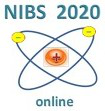Speaker
Description
Mechanism of the meniscus formation in negative ion sources for fusion has not been clarified yet since negative charges in the plasmas consist of multiple components, electron and negative ion, and a magnetic field in the vicinity of extraction holes has 3D complicated topology. In our previous study, correlation between the negative ion beam optics and plasma parameters was examined by varying a bias voltage, where the beam width was measured by means of beamlet monitor consisting of CFC tiles and an IR camera. It was observed that the beam width changes along the same curve with respect to the negative ion density for different bias voltages while the negative ion-to-electron density ratio and the plasma potential significantly changed depending on the bias voltage[1]. This implies that the meniscus shape in the negative ion extraction could be controlled by just a perveance matching as usually adopted in the positive ion extraction. On the other hand, a specific feature in the negative ion beamlet was observed in the phase space. The phase space of negative ion beamlet is occupied by multi-Gaussian components[2], and this feature has not been reported for the positive ion beamlet. Then, in this study the beam measurement in the phase space was conducted at different bias voltages (3 V and -10 V) with the same negative ion density in order to clarify the impact of the bias voltage on the meniscus formation in more detail. As a result, it was observed that a beamlet is composed of three Gaussian components in both cases, and that the phase space structure does not depends on the bias voltage. This suggests that the electron is not involved with the meniscus formation at least in caesiated plasmas. In addition, the effect of an electric field estimated from the difference between the bias voltage and plasma potential on the meniscus shape was not clearly identified in this study.
- M. Kisaki et. al., Rev. Sci. Instrum. 91. 023503 (2020).
- Y. Haba et. al., New J. Phys. 22 (2020) 023017.

